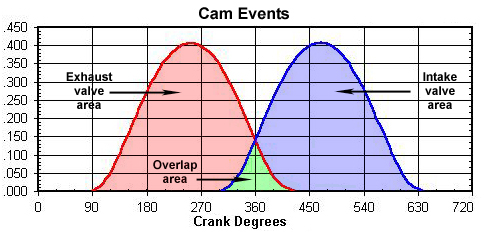- Posts
- 10,746
- Location
- A bit sarf of Dorking
To save myself scanning dusty textbooks, I grabbed this from Google.

It's partly to do with using the inlet gas to blow out burnt stuff, partly to do with keeping the gases moving as much as poss and partly because the valves aren't actually very far open at TDC.

It's partly to do with using the inlet gas to blow out burnt stuff, partly to do with keeping the gases moving as much as poss and partly because the valves aren't actually very far open at TDC.
